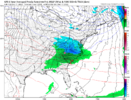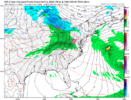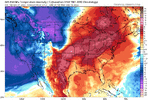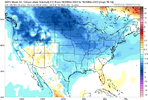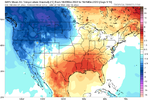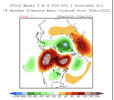Actually if we flood Alaska with low pressure then it’s pretty similar progression to jan 2021, but options are on the table
1. We either dump a piece of energy cleanly into the pacific and flex the western ridge, get minimal interaction between that energy that enters AK and the Canadian TPV and we get a big chunk of the TPV under the block successfully, and we get rockin and rolling
2. There some interaction between the Canadian TPV and the energy diving in AK, but not enough interaction so we get a solid piece of the TPV but not the whole thing, it’s a bit murky out west but energy rounding the NPAC ridge eventually rexes the pacific and heights are raised out west. still a solid option
3. We get a ---- ton of interaction between the Alaskan energy and Canadian TPV, so the Alaskan energy pulls the TPV out of Canada, and nothing gets under the block, energy dumps out west as the energy dives out of Alaska and the energy rounding the NPAC ridge feels the less backed up/retrogressive flow. At best we get cutoff lows. That’s pretty similar to 2021
I’d go with option 2 to in between 1-2 for now, that EPS run was glorious so I’m not to worried

